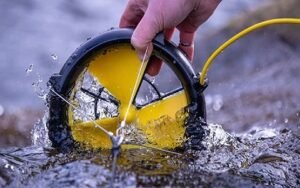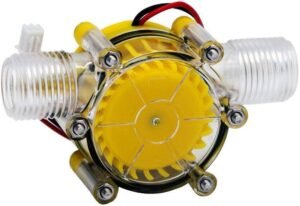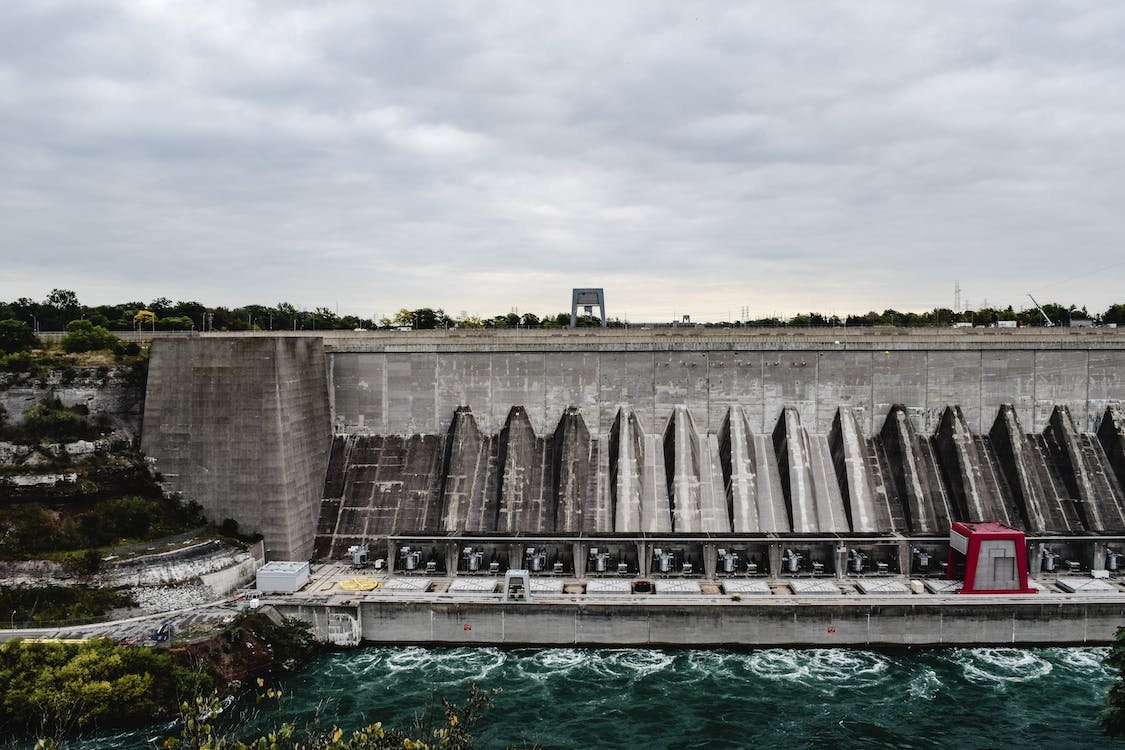Hydro energy, also known as hydroelectric power, is a renewable source of energy that harnesses the power of moving water to generate electricity.
This form of clean energy has been used for centuries and is becoming increasingly popular as we search for ways to reduce our dependence on fossil fuels. In this blog post, we will explore the basics of hydro energy and take a closer look at some smaller hydro turbine projects around the world.
How does hydro energy work? The basic process of hydro energy is simple: Water is collected in a reservoir, which is a large man-made lake or storage area. It is then released through a turbine, a machine with blades that spins when water flows through it. The spinning turbine turns a generator, a device that converts mechanical energy into electricity. The amount of electricity produced depends on the amount of water released and the height it falls from, known as the head. This is why hydro energy is often used in areas with high rainfall, mountainous terrain, or access to large bodies of water, such as oceans, rivers, or lakes.
Benefits of hydroelectric One of the biggest advantages of hydroelectricity is that it is a renewable resource. As long as the sun continues to evaporate water, the cycle of water can continue, making it a sustainable source of energy. Hydro energy is also considered a clean source of energy as it does not produce any emissions or harmful pollutants. This is in contrast to traditional energy sources such as coal or oil, which release large amounts of carbon dioxide and other pollutants into the atmosphere. Moreover, hydro energy is also reliable and can generate power 24/7, making it a valuable asset for meeting the energy demands of communities. Additionally, it is cost-effective, with low operating costs as there are no fuel costs associated with it. Once installed, a hydro plant can continue to produce electricity for decades, making it a long-term investment with a high return.
Smaller hydro turbine projects While hydro energy is often associated with large dams and power plants, there are also smaller-scale projects that make use of hydro energy on a smaller scale. These projects can be found all over the world, from rural communities to urban settings.
One great example is the Syukhtun hydroelectric project in Russia. It uses a small hydro turbine to generate electricity for the nearby village of Syukhtun, which previously relied on diesel generators. This project not only provides clean energy but also reduces the cost of electricity for the community.
Another noteworthy project is the Red River Mill Hydro Project in Vermont, USA. It uses a small hydro turbine to generate 20% of the power needed for the nearby.
Power generation using hydro electric plants are the most environmentally friendly and commonly used energy production globally. They are sited where large amount of energy can be produced and make up a percentage of the global energy production.
There now small systems which can be from company portable for camping, all the way to enable single homes and small communities use the availability of hydro power. The greatest untapped potential of hydro power lies in our own homes.
In the pipes which either bring in water or the waste water aft washing, bathing, or cleaning clothes. There are also the pipes which carry rain-water from our roofs to the drains. These are all untapped sources of micro energy generation which when combined can add up to a sizeable percentage of our home energy consumption. Naturally battery storage is ideal suited to ensure this energy when available is being stored for when we need it.



- Another example of a successful small-scale hydro energy project is the Harris Hydroelectric Plant in Scotland, which powers over 600 homes in the area.
- The benefits of small-scale hydroelectric projects go beyond just clean electricity; they also contribute to local economic development and create job opportunities for communities.
- Small hydro turbines are becoming increasingly popular due to advancements in technology that have made them more efficient and cost-effective compared to traditional fossil fuel sources.
- The potential for growth in the small-scale hydro energy sector is significant, as many regions around the world have untapped resources that could be harnessed for sustainable power generation.
- Despite their advantages, small-scale hydroelectric projects still face challenges such as environmental impact assessments, regulatory hurdles, and securing funding; addressing these issues will be crucial for further expansion in this sector. The majority of these regulatory issues are in place for larger projects, with limited consideration for the different needs and impacts of smaller turbines. These new generation turbines and systems incorporate many features to ensure they have zero impact on wildlife and fish, as well as breeding grounds.
References
Quaranta, E., Bódis, K., Kasiulis, E., McNabola, A., &Pistocchi, A. (2022, April 1). Is There a Residual and Hidden Potential for Small And . . . Water Resources Management. https://doi.org/10.1007/s11269-022-03084-6


